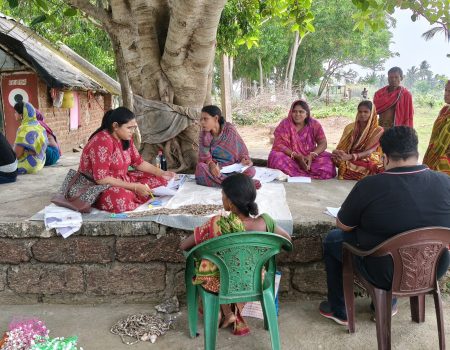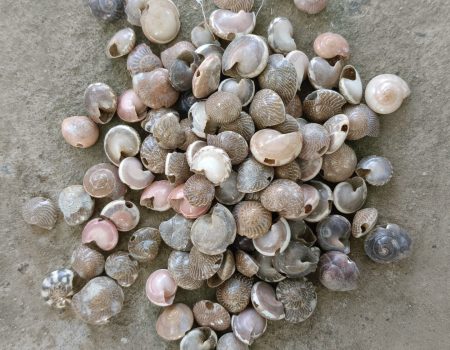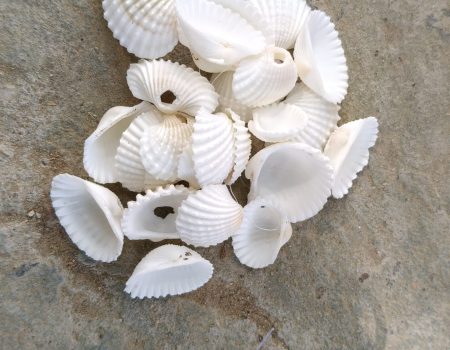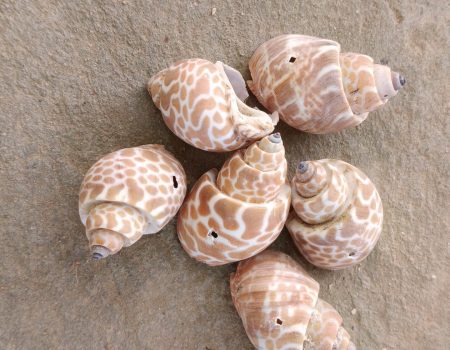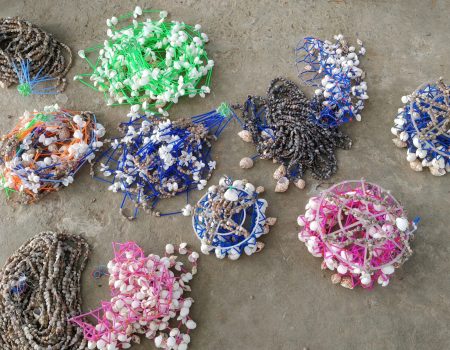As part of the project titled “Feasibility Study to Identify and Promote Commercially Viable Technologies for Value-Added Product Development in Seashell Crafts from Puri Region of Odisha,” a field study was conducted on 4th April 2025 in Redhua village, Gop Block, Puri district by a KIIT-TBI research team, aiming to gain in-depth insights into the socio-economic conditions and production ecosystem of local seashell artisans.
Led by expert Ms. Subhasmita Sahoo, with investigators Mr. Abhishek Tripathy, Ms. Nibedita Khatua and local coordinator Ms. Smita Biswal, the team engaged with 30 artisans practising seashell crafts.
The team gathered essential insights into the artisans’ traditional craft knowledge, income patterns, production capacities, and aspirations for the future through one-to-one interviews with structured questionnaires.
These artisans expressed deep concern over the fading relevance of their traditional, inherited techniques, which are increasingly being overshadowed by modern crafting methods and changing market trends. They emphasized the urgent need for government support and timely interventions to preserve their craft and sustain their livelihoods.

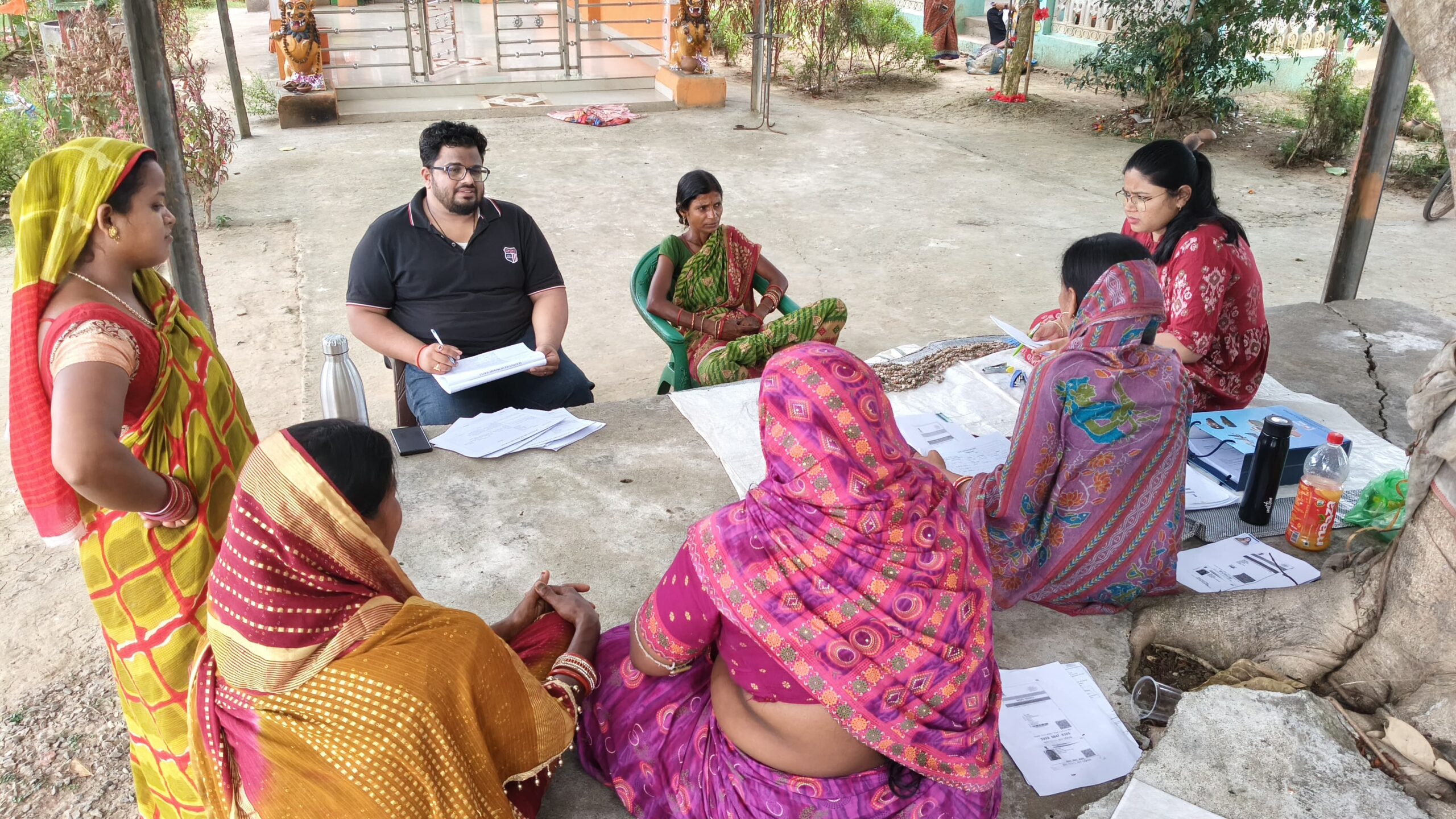
Furthermore, the team engaged with four experienced master artisans—Rasmita Malik, Mamina Swain, Jhili Swain, and Swarnalata Swain—who are well-known for their expertise in seashell craftsmanship. Their insights shed light on key aspects such as the supply chain, market trends, the influence of tourism, and the diversity of skills among local artisans. During the survey, several major issues were unearthed the Key challenges uncovered include limited access to markets, outdated tools and techniques, and poor logistical connectivity, all contributing to low profitability.
What’s surprising was that, despite all these constraints/bottlenecks, artisans never gave up on the age-old practice and kept pushing the limits and have a strong willingness to adopt innovations and expand their reach—highlighting the need for targeted support and capacity-building efforts.
The survey findings reveal a stark disconnect between existing government schemes for handicrafts and their actual reach at the grassroots level. Despite the presence of supportive initiatives, most artisans remain unaware of or unable to access them, leaving their craft and livelihoods vulnerable. This highlights an urgent need for integrated efforts that connect traditional skills with modern entrepreneurial ecosystems. Strategic interventions in technology adoption, design enhancement, infrastructure support, and robust market linkages can unlock the untapped potential of seashell craft in Puri—transforming it into a resilient, thriving, and sustainable livelihood sector.
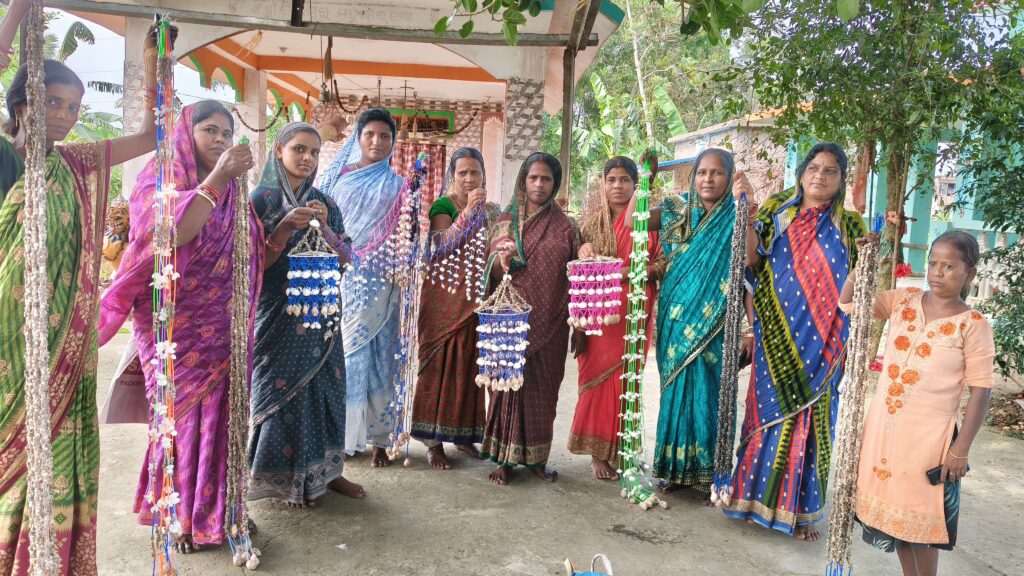
Glimpses
